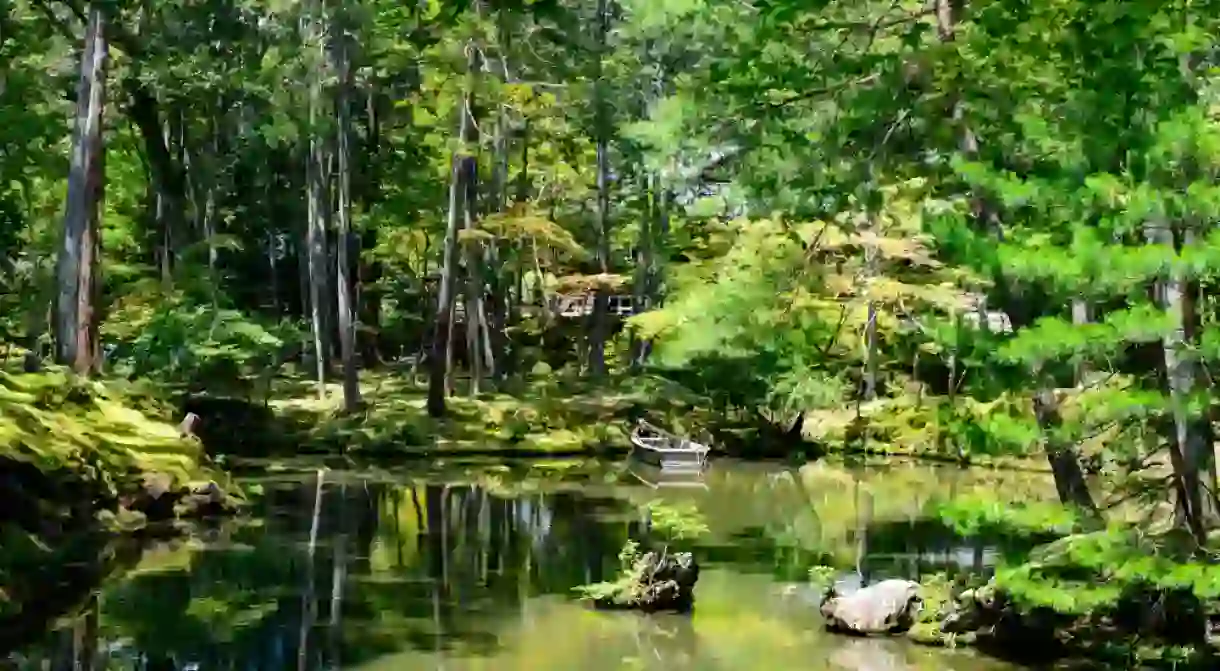The 10 Most Beautiful Traditional Japanese Gardens in Kyoto

In the cultural capital of Japan, you can experience some of the most sublime and tranquil gardens in the country. Every shape, size and type is on display, from dry stone Zen gardens designed for peace and relaxation to gorgeous stroll gardens designed for the recreation of lords and shoguns. Ready to explore? Here are the most beautiful traditional Japanese gardens in Kyoto.
Ryoan-ji Temple
Buddhist Temple

Ginkaku-ji Temple
Botanical Garden, Park

Saiho-ji Temple
Park, Botanical Garden

Heian Jingu Shrine
Bridge, Shrine, Park, Botanical Garden

Tenryu-ji Temple
Botanical Garden, Park, Shrine

Nijo Castle
Building

Nanzen-ji
Architectural Landmark

Set in the east of Kyoto, in the shadow of the lush Higashiyama Mountains, Nanzen-ji is one of Kyoto’s most impressive Buddhist temples; think multi-storied wooden structures, towering gates and a spectacular rock garden. Next to the Hojo, the former head priest’s residence, is the Zen garden, fringed by photo-worthy trees and boulders and regularly raked to perfection – a meditative process to watch if you catch it in action. After your visit, make for Junsei restaurant nearby for an epic tofu feast, overlooking a small but pretty landscaped garden.
Katsura Rikyu
Architectural Landmark, Park, Botanical Garden

A visit to this imperial villa, perched on the Katsura River, delivers an insight into what it would have been like to live as Japanese royalty in the 17th century. Everything looks out upon the tranquil garden, clearly the centrepiece – and most meditative space – of the grounds. A serene pond, arching maple trees and a pretty bridge make the whole thing atmospheric. As does the tranquillity – because you’ll have to visit on a pre-booked tour, you’ll really escape the Kyoto crowds.
Kinkaku-ji
Botanical Garden, Park

Possibly the most famous sight in Kyoto, Kinkaku-ji – also known as the gold temple for the abundant use of metallic leaf on the exterior – attracts swarms of tourists, drawn to the blingy beauty and perfect mirrored reflection in the adjoining lake. Rather than rush to the main event, take time to appreciate the epic gardens in which the golden structure is set. Moss-covered stones, knobby mature fir and pine trees, plus ferns cropping out from rock walls are all worthy of your attention.
Murin-an
Botanical Garden, Park
Created by a 19th-century politician with a fascination for Western culture, this lovely garden incorporates some distinctly un-Japanese elements – a villa with dark-painted walls and panelled ceilings, and large swathes of lawn (probably an influence from Britain). Of course, it’s also very Japanese, with tea rooms on the grounds, outbreaks of moss and a rambling stream fed by Lake Biwa, the largest lake in Japan. The surrounding mountainous landscape only adds to the enchanting scene.
Trips and Tours in Japan
Historical Landmark

Planning to visit Kyoto? Don’t stop at this magical city. Combine with Tokyo, Osaka, Hiroshima and the endlessly beautiful natural landscapes of Japan on one of our immersive multi-day tours, ranging in length, price and trip style.
Ellie Hurley contributed additional reporting.












